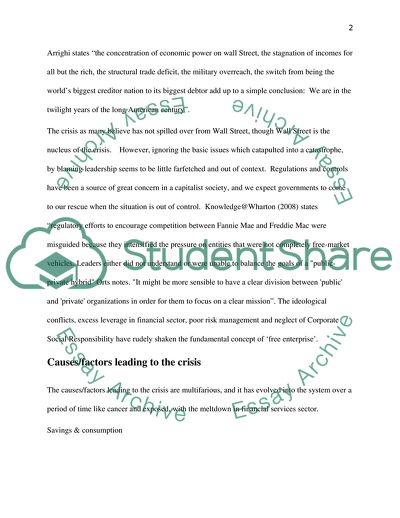Cite this document
(The Question of the Leadership Crisis in the Industry Case Study Example | Topics and Well Written Essays - 1750 words, n.d.)
The Question of the Leadership Crisis in the Industry Case Study Example | Topics and Well Written Essays - 1750 words. https://studentshare.org/human-resources/1746968-is-leadership-responsible-for-2008-financial-services-meltdown-case-study
The Question of the Leadership Crisis in the Industry Case Study Example | Topics and Well Written Essays - 1750 words. https://studentshare.org/human-resources/1746968-is-leadership-responsible-for-2008-financial-services-meltdown-case-study
(The Question of the Leadership Crisis in the Industry Case Study Example | Topics and Well Written Essays - 1750 Words)
The Question of the Leadership Crisis in the Industry Case Study Example | Topics and Well Written Essays - 1750 Words. https://studentshare.org/human-resources/1746968-is-leadership-responsible-for-2008-financial-services-meltdown-case-study.
The Question of the Leadership Crisis in the Industry Case Study Example | Topics and Well Written Essays - 1750 Words. https://studentshare.org/human-resources/1746968-is-leadership-responsible-for-2008-financial-services-meltdown-case-study.
“The Question of the Leadership Crisis in the Industry Case Study Example | Topics and Well Written Essays - 1750 Words”. https://studentshare.org/human-resources/1746968-is-leadership-responsible-for-2008-financial-services-meltdown-case-study.


